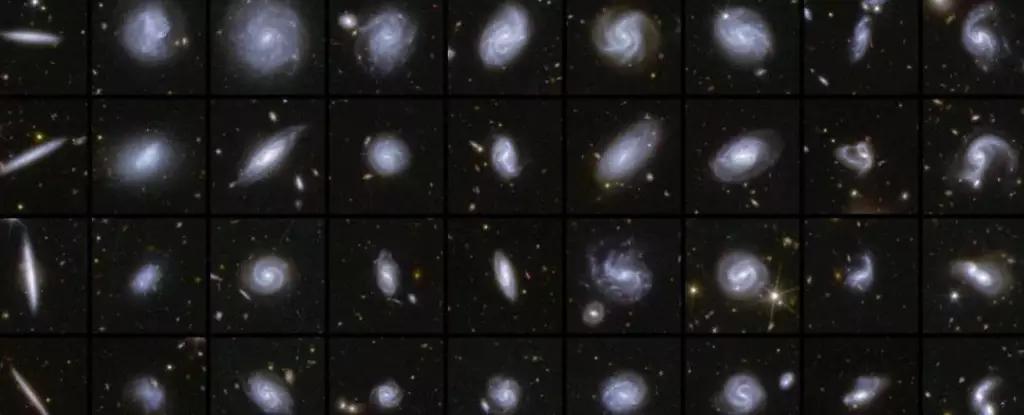The Euclid Space Telescope, launched by the European Space Agency (ESA) in July 2023, is set to revolutionize our comprehension of the universe. This cutting-edge instrument is not just another telescope; it embodies the pinnacle of modern astro-technology. With a remarkable 600-megapixel camera designed to capture detailed imagery of cosmic objects, Euclid is fundamentally altering the way astronomers approach the study of the universe. While its spectacular first images of iconic structures like the Perseus Cluster and the Horsehead Nebula captivated the public, the telescope has now embarked on a grander mission by focusing on the cosmic tapestry itself—mapping the intricate expansion of the universe over billions of years.
Euclid’s ambitious task of imaging billions of galaxies up to 10 billion light years away aims to cover over one-third of the observable sky. This vast scope is comparable to previous landmark surveys yet promises unprecedented detail and depth. The release of its inaugural survey data, inclusive of its meticulously chosen Deep Fields, provides tantalizing insights into the foundations of our cosmos, echoing the historic contributions made by the Hubble Space Telescope.
Deep Fields: A Window into the Universe’s Past
The Deep Fields that Euclid will observe repeatedly over its operational lifespan serve a crucial role in unraveling the mysteries of dark matter and the universe’s expansion history. With periodic scans of these celestial patches, researchers will glean essential data, akin to a treasure chest where each image hides a piece of the cosmic puzzle. ESA’s Director of Science, Prof. Carole Mundell, encapsulated this sentiment when she declared Euclid to be an “ultimate discovery machine.” The telescope is not merely documenting galaxies; it is probing the very forces that shape them and our universe, answering age-old questions regarding our cosmic origins.
In its preliminary scans, Euclid has already identified an astounding 26 million galaxies. The sheer volume of this data emphasizes Euclid’s significance; it represents only 0.4% of the total number of galaxies it aims to catalogue throughout its mission, which is projected to conclude in 2030. Each galaxy catalogued will contribute to a broader understanding of how galaxies evolve, how they interact within the cosmic web, and how their formation has been influenced by the universe’s enigmatic components, dark matter and dark energy.
Mapping the Invisible: Dark Matter and Dark Energy
At the heart of Euclid’s mission is the quest to unravel the mysteries of dark matter and dark energy—two of the most profound enigmas confronting modern astrophysics. Understanding how these abstract concepts interact requires precision observational tools such as Euclid. By facilitating the mapping of the cosmic web, which consists of filaments of both dark and regular matter, the telescope stands to unlock new paradigms of knowledge regarding galactic formation and evolution.
This endeavor involves the combined expertise of scientists, AI, and citizen researchers, emphasizing collaborative science’s vital role in modern discovery. Initial findings include nearly 500 previously unidentified strong gravitational lenses, showcasing the efficacy of AI-driven analysis alongside human scrutiny. This interplay between technology and human intellect epitomizes the future of astronomical research, where massive data sets are navigated and understood through innovative approaches.
Legacy of Discovery: A Parallel with Gaia
Drawing parallels between Euclid and the ESA’s significant Gaia mission is inevitable. Just as Gaia has crafted an exquisite, high-resolution map of the Milky Way, Euclid is set to create foundational insights into the structure of the universe at large. Will we see similar transformative impacts in astrophysics arising from Euclid’s deep surveys? The anticipation among the scientific community is palpable, with expectations that the data will become indispensable for understanding both the overarching cosmic structure and the detailed behaviors of celestial objects.
Like Gaia, which has redefined our comprehension of the Milky Way through its meticulous observations, Euclid promises to forge a path towards groundbreaking revelations in cosmology. Its exquisite detail and far-reaching survey will allow for explorations of fundamental cosmic principles concerning the formation, evolution, and interactions of galaxies, illuminating mysteries critical to scientific inquiry.
In essence, the Euclid Space Telescope embodies the essence of scientific exploration—delivering unparalleled insights into our universe while promising to foster an era of unprecedented discovery. With each image captured and every galaxy catalogued, we approach a greater understanding of the universe and our place within it. This mission envisions a roadmap for not only cosmological research but also for future generations of scientists keen on exploring the final frontier.


Leave a Reply